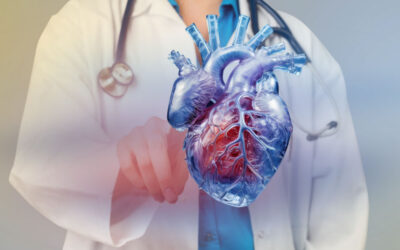Over the years the quality of healthcare delivery has improved to a great extent due to advancement of technology. The delivery of healthcare facilities during patient care is a team effort involving clinical and allied healthcare professional or paramedical professional. Paramedical healthcare professionals are key to a successful treatment delivery in a healthcare organization. The benefits of paramedical professional is still unexplored in India. The courses offered by MLTGURU an Institute managed by doctors focuses on training its students effectively to build capacity for healthcare industry which will have enormous effect on accessibility of healthcare services.
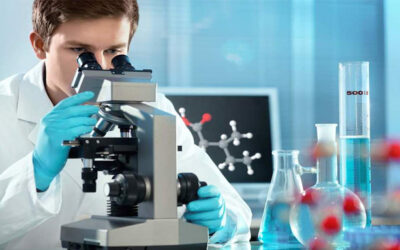
Medical Laboratory Technician
Course Code :- PCC-102
Eligibility :- 10th Pass
Duration :- 1 Year
Annual Fees ( In Rs ) :- 12500
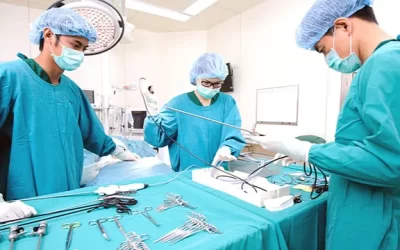
Operation Theatre Technician
Course Code :- PCC-122
Eligibility :- 10th Pass
Duration :- 1 Year
Annual Fees ( In Rs ) :- 12500
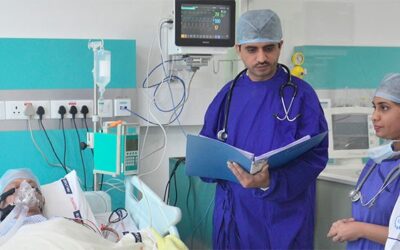
ICU Technician
Course Code :- PCC-121
Eligibility :- 10th Pass
Duration :- 1 Year
Annual Fees ( In Rs ) :- 12500

X-Ray Technician
Course Code :- PCC-105
Eligibility :- 10th Pass
Duration :- 1 Year
Annual Fees ( In Rs ) :- 12500

Physiotherapy (CPT)
Course Code :- PCC-101
Eligibility :- 10th Pass
Duration :- 1 Year
Annual Fees ( In Rs ) :- 12500

Hospital Management
Course Code :- PCC-109
Eligibility :- 10th Pass
Duration :- 1 Year
Annual Fees ( In Rs ) :- 12500
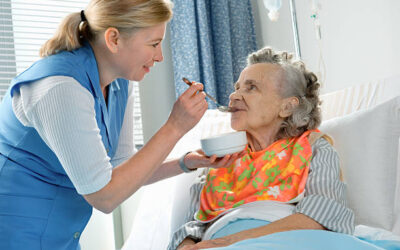
Multipurpose Health Worker (DMHW)
Course Code :- PDC-201
Eligibility :- 10th Pass
Duration :- 1 Year
Annual Fees ( In Rs ) :- 22500
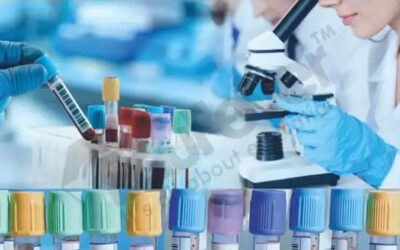
Lab Technician
Course Code :- PDC-204
Eligibility :- 10th Pass
Duration :- 1 Year
Annual Fees ( In Rs ) :- 22500
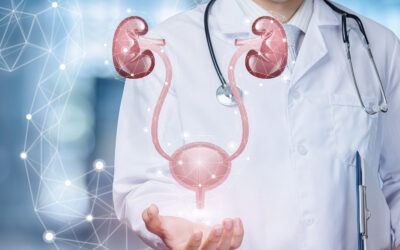
Diploma in Dialysis Technology
- Eligibility :- 10+2 Pass with 10+2 Pass with PCB
- Duration :- 1 or 2 Years
- Annual Fees ( In Rs ) :- 20,000 -3,00,000
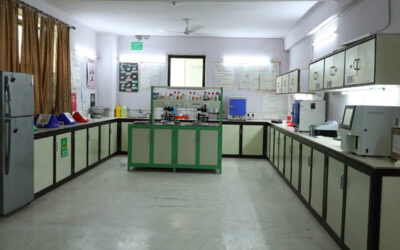
Bachelor of Science Medical Laboratory Tech. (Lateral)
Course Code :- PUP-303
Eligibility :- 10+2(PCB) & CMLT
Duration :- 2 Year
Annual Fees ( In Rs ) :- 18600
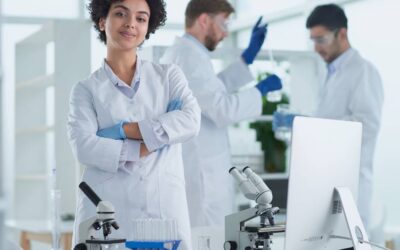
Bachelor of Science Medical Laboratory Tech. (Lateral)
Course Code :- PUP-304
Eligibility :- 10+2 (PCB) & DMLT
Duration :- 2 Year
Annual Fees ( In Rs ) :- 18600
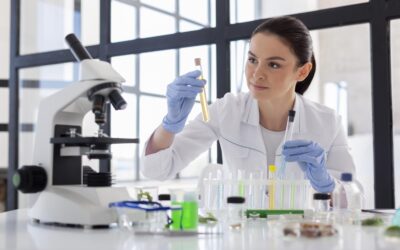
Bachelor of Science Medical Laboratory Tech.
Course Code :- PUP-305
Eligibility :- 10+2 (PCB)
Duration :- 3 Year
Annual Fees ( In Rs ) :- 20000
Medical Laboratory technology (MLT) Syllabus : Overview
Medical Laboratory Technology (MLT) syllabus helps students understand the value of laboratories in the current world by focusing on an intensive study of the technology employed in modern medical science.
Medical Laboratory Technology course has mandatory and optional subjects that enhance knowledge in the area of medical laboratories. The school also provides hands-on training in areas like Blood Banking, Immunology, and Diagnostic Methods. MLT syllabus provides students with knowledge and abilities that are transferable to many different jobs, including those of CT-Scan Technician, MRI Technician, Dental Machine Technician, and Optical Laboratory Technician.
BSc Medical Laboratory Technology Syllabus: Semester wise
Semester 1
- Fundamentals of Medical Laboratory Technology
- Human Anatomy-I
- Pharmacology Theory
- Human Physiology -I
- Biochemistry
Semester 2
- Fundamentals of Medical Laboratory Technology & Biomedical Techniques
- Human Anatomy II
- Bio Medical Waste Management
- Human Physiology -II
- General Microbiology and Immunology Theory
Semester 3
- General Hematology
- Pathology-I
- Parasitology and Entomology
- General Bacteriology
- Histopathology & Histotechniques
Semester 4
- Pathology II
- Histopathology & Histotechniques -II
- Systemic Bacteriology, Virology and Mycology
- Study Tour
- Environmental Sciences
Semester 5
- Parasitolog
- Immunohematology & Blood Banking
- Preventive and Social Medicine
- Basic Tissue Pathology
- Diagnostic Cytology
Semester 6
- Cytogenetics & Tissue Culture
- Diagnostic Molecular Biology
- Advanced Diagnostic Techniques
- Clinical Endocrinology & Toxicology
- Internship
BSc Medical Laboratory Technology Syllabus: Core Subjects
- Fundamentals of Medical Laboratory Technology
- Human Anatomy
- Microbiology
- General Biochemistry
- Pharmacology
- Histopathology & Histotechniques
- General Microbiology and Immunology
- Systemic Bacteriology, Virology and Mycology
- Cytology & Cytotechnology
- Principles of Lab Management & Medical Ethics
BSc Medical Laboratory Technology Syllabus: Elective Subjects
- Communication and Soft Skills
- Computer Application
- Value and moral education
- Health Education & Health Communication
BSc Medical Laboratory Technology Syllabus: Detailed
A detailed information on a few of the BSc MLT subjects that are included in the BSc Medical Laboratory Technology Syllabus is given below:
Introduction to Health:
Concept of health, Concept of well-being, the standard of living, quality of life, Hygiene, Dimensions of health, positive health, the spectrum of health, spectrum of disease, responsibility for health.
Biochemistry:
Introduction to Clinical Biochemistry and role of Medical Lab Technologist, Glassware & plastic wares used in the lab, calibration of volumetric apparatus.
Anatomy:
Blood, Muscle, Gastrointestinal Tract, Kidney, Endocrines, Reproduction, Cardiovascular System, Respiration, Central Nervous System.
Fundamentals of Medical Laboratory Techniques and Biomedical Techniques:
Common Lab accidents and ways for its prevention, Common Laboratory hazards, Medico-legal aspects of Lab technology, Methods of qualitative analysis.
Bio-Medical Waste Management:
Bio-medical waste – Concepts and Perceptions, Waste Generation, Segregation, Disposal, Training, Occupational Safety and Health Issues.
Pharmacology:
General Pharmacology, Drugs Acting on the central nervous system, Drugs acting on the autonomic nervous system, Drugs acting on the respiratory system, Drugs acting on the cardiovascular system.
BSc Medical Laboratory Technology Syllabus: Course Structure
- VI Semesters
- Core Subjects
- Elective Subjects
- Practical Lab Workshops
- Projects
- Internships
BSc Medical Laboratory Technology Syllabus: Teaching Methods
- Educational Technologies
- Traditional Classroom Based Teaching
- Project Based Learning
- Guest Lectures
BSc Medical Laboratory Technology Syllabus: Important Books
- Medical Laboratory Technology by Ramnik Sood
- Urinalysis and body fluids by Susan King Strasinger
- Informatics for the Clinical Laboratory: A Practical Guide for the Pathologist by Daniel Cowan
List of Top Medical Laboratory Technology Institutes & Universities in India Based on 2024 Ranking
| CD Rank | Institutes & Universities | Courses Fees | Placement | User Review |
|---|---|---|---|---|
| 1 | Post Graduate Institute of Medical Eduacation & Research - [PGIMER], Chandigarh | 2,970 | 3.9/5 | |
| 2 | Sanjay Gandhi Postgraduate Institute Of Medical Science - [SGPGIMS], Lucknow | 79,800 | 4/5 | |
| 3 | Banaras Hindu University BHU, Varanasi | 30,000 | 23,13,000 to 1,20,00,000 | 3.9/5 |
| 4 | Jawaharlal Institute of Postgraduate Medical Education and Research (JIPMER), Pondicheery | 11,410 | 4.2/5 | |
| 5 | King’s George Medical University (KGMU), Lucknow | 37,000 | 4/5 | |
| 6 | Sri Ramachandra Institute of Higher Education and Research (SRIHER), Chennai | 125,000 | 7,00,000 to 30,00,000 | 3.9/5 |
| 7 | St. John's Medical College, Bangalore | 500,000 | 4.3/5 | |
| 8 | Aligarh Muslim University (AMU), Aligarh | 47,570 | 4,50,000 to 6,50,000 | 4.1/5 |
| 9 | Jamia Hamdard University (JHU), New Delhi | 135,000 | 3,50,000 to 7,20,000 | 4.2/5 |
| 10 | Kasturba Medical College (KMC) Mangalore | 646,000 | 4.3/5 | |
| 11 | JSS Medical College And Hospital (JSSMCH), Mysore | 166,600 | 3.9/5 | |
| 12 | Vardhman Mahavir Medical College (VMMC), New Delhi | 50,000 | 4.4/5 | |
| 13 | Siksha ‘O’ Anusandhan University (SOA), Bhubaneswar | 100,000 | 5,00,000 to 46,00,000 | 4.2/5 |
| 14 | SRM Institute of Science and Technology (SRM IST), Chennai | 125,000 | 7,50,000 to 52,00,000 | 4.1/5 |
| 15 | University College of Medical Sciences (UCMS), New Delhi | 35,000 | 4.4/5 | |
| 16 | Saveetha Medical College, chennai | 145,000 | 4.3/5 | |
| 17 | Regional Institute of Medical Sciences (RIMS), Imphal | 10,960 | 3.6/5 | |
| 18 | Grant Medical College And Sir J.J. Group Of Hospital , Mumbai | 60,761 | 4.4/5 | |
| 19 | Bangalore Medical College and Research Institute (BMCRI), Bangalore | 17,970 | 4.2/5 | |
| 20 | Seth Gordhandas Sunderdas Medical College (GSMC), Mumbai | 144,190 | 4/5 |
Under Construction
Medical Lab Technology Important Questions and Answers
1. What is the normality of a solution of sodium hydroxide (molecular weight=40) containing 20 grams in 100 mL of solution?
- 5.0N
- 1.0N
- 0.5N
- 0.4N
Correct Answer = 1. 5.0N
Explanation :- The normality (N) of a solution is defined as the number of equivalents of solute per liter of solution. To calculate the normality, we need to determine the number of equivalents of sodium hydroxide in the given solution. Sodium hydroxide (NaOH) is a strong base that dissociates completely in water to form one hydroxide ion (OH-) per molecule. Therefore, the number of equivalents is equal to the number of moles of sodium hydroxide.
First, we need to calculate the number of moles of sodium hydroxide in 20 grams. The molecular weight of sodium hydroxide is 40 g/mol, so the number of moles is 20 g / 40 g/mol = 0.5 mol.
Next, we need to determine the volume of the solution in liters. The given solution has a volume of 100 mL, which is equal to 0.1 L.
Finally, we can calculate the normality by dividing the number of equivalents (moles) by the volume in liters: 0.5 mol / 0.1 L = 5.0N.
Therefore, the normality of the sodium hydroxide solution is 5.0N.
2. Carbohydrates are organic compounds of 1. carbon 2. hydrogen 33. Oxygen
- 1 and 2 only
- B 1 and 3 only
- 2 and 3 only
- 1,2, and 3
Correct Answer = 4. 1,2, and 3
Explanation :- Carbohydrates are organic compounds that consist of carbon, hydrogen, and oxygen atoms. These atoms are bonded together in specific ratios, with the general formula for carbohydrates being (CH2O)n. Therefore, the correct answer is 1, 2, and 3, as all three elements are present in carbohydrates.
3. If test results are within +/-2 standard deviations, the ratio of test results beyond the +/-2 SD limit will be 1 out of
- 3
- 5
- 20
- 300
Correct Answer = 3. 20
Explanation :- If test results are within +/-2 standard deviations, it means that they fall within a range of two standard deviations on either side of the mean. Since the normal distribution curve is symmetrical, the area outside this range on both sides is equal. The ratio of test results beyond the +/-2 SD limit will be 1 out of 20 because the total area outside this range is 5% (2.5% on each side), and the total area under the curve is 100%. Therefore, the ratio is 5%/100% = 1/20.
4. WHich one of the following is a function of gamma globulin?
- Transports glucose
- Regulates body temperature
- Performs as fibrinogen for blood coagulation
- Provides humoral immunity
Correct Answer = 4. Provides humoral immunity
Explanation :- Gamma globulin is a type of protein found in the blood that plays a crucial role in providing humoral immunity. It is a component of the immune system and contains antibodies that help in fighting off infections and diseases. These antibodies are produced by B cells and are responsible for recognizing and neutralizing foreign substances such as bacteria and viruses. Therefore, gamma globulin is essential for the body’s immune response and helps protect against various pathogens.
5. Which instruments do NOT measure concentrations of a particular molecule but of the total ions and molecules in general (number of moles per kilogram of water)?
- Osmometers
- Spectrophotometers
- Blood gas analyzers
- Immunochemical analyzers
Correct Answer = 1. Osmometers
Explanation :- Osmometers are instruments that measure the total ions and molecules in a solution, rather than specifically measuring the concentration of a particular molecule. They do this by determining the osmotic pressure of the solution, which is a measure of the number of moles of solute per kilogram of water. Osmometers are commonly used in medical and research laboratories to measure the osmolality of bodily fluids and other solutions. This information is useful in diagnosing and monitoring certain medical conditions, as well as in various scientific and industrial applications.
6. Osmolality of a solution is determined by measuring
- Freezing point depression
- Refractive index
- C.Specific gravity
- Ionic strength
Correct Answer = 1. Freezing point depression
Explanation:- Osmolality of a solution is determined by measuring freezing point depression. This is because the freezing point of a solution is lower than that of the pure solvent, and the extent of this depression is directly related to the number of solute particles present in the solution. Osmolality is a measure of the concentration of solute particles in a solution, and by measuring the freezing point depression, one can determine the osmolality accurately. Refractive index, specific gravity, and ionic strength are not directly related to osmolality measurement.
7. Most methods for the determination of blood creatinine are based on the reaction of creatinine and
- Sulfuric acid
- Alkaline picrate
- Acetic anhydride
- Ammonium hydroxide
Correct Answer = 2. Alkaline picrate
Explanation:- The correct answer is alkaline picrate. Most methods for the determination of blood creatinine are based on the reaction of creatinine with alkaline picrate. This reaction forms a colored complex, which can be measured spectrophotometrically. By measuring the absorbance of the complex, the concentration of creatinine in the blood sample can be determined.
8. All of the following influence glomerular filtration EXCEPT
- Decreased renal blood flow and cardiac failure
- Cardiac failure and renal or urinary calculi
- Renal or urinary calculi and decreased renal blood flow
- Hyperglycemia and renal tubule malfunction
Correct Answer = 4. Hyperglycemia and renal tubule malfunction
Explanation :- The correct answer is hyperglycemia and renal tubule malfunction. Glomerular filtration is primarily influenced by factors such as renal blood flow and cardiac function, as well as the presence of renal or urinary calculi. Hyperglycemia and renal tubule malfunction, on the other hand, are not directly related to glomerular filtration.
9. Unconjugated bilirubin is also known as
- Conjugated bilirubin
- Prehepatic bilirubin
- Total bilirubin
- Biliverdin
Correct Answer = 2. Prehepatic bilirubin
Explanation:- Unconjugated bilirubin refers to bilirubin that has not yet been processed by the liver. It is produced when red blood cells break down and is transported to the liver for further processing. Prehepatic bilirubin is another term for unconjugated bilirubin, as it indicates that the bilirubin has not yet reached the liver. Conjugated bilirubin, on the other hand, refers to bilirubin that has been processed by the liver and is ready to be excreted. Total bilirubin is the sum of both unconjugated and conjugated bilirubin. Biliverdin, on the other hand, is a green pigment that is converted to bilirubin in the body.
10. The ketone bodies include acetoacetic acid, acetone, and
- Lactic acid
- 3-hydroxy butyric acid
- Oxaloacetic acid
- Acetic acid
Correct Answer = 2. 3-hydroxy butyric acid
Explanation :- The ketone bodies are acetoacetic acid, acetone, and 3-hydroxy butyric acid. Lactic acid, oxaloacetic acid, and acetic acid are not considered ketone bodies.
11. Blood glucose levels are directly regulated by the hormone
- ACTH
- Insulin
- Thyroxin
- Hydrocortisone
Correct Answer = 2. Insulin
Explanation:- Insulin is the correct answer because it is the hormone responsible for regulating blood glucose levels. Insulin is produced by the pancreas and helps to lower blood glucose levels by allowing cells to take in glucose from the bloodstream. It also promotes the storage of glucose as glycogen in the liver and muscles. Without sufficient insulin, blood glucose levels can become too high, leading to conditions like diabetes. ACTH, thyroxin, and hydrocortisone are not directly involved in the regulation of blood glucose levels.
12. Albumin, alpha1, alpha2, beta, and gamma globulin are electrophoretic fractions of
- Hemoglobin
- Amino acid
- Serum protein
- Serum lipoprotein
Correct Answer = 3. Serum protein
Explanation :- Albumin, alpha1, alpha2, beta, and gamma globulin are electrophoretic fractions of serum protein. Electrophoretic fractionation is a technique used to separate different proteins based on their charge and size. In this case, the given fractions are all components of serum protein, which is a mixture of proteins found in blood plasma. Therefore, the correct answer is serum protein.
13. Which one of the following methods could be used to study protein abnormality?
- Isoenzyme electrophoresis
- Immunoelectrophoresis
- Electrophoresis of penicilliamine-treated serum
- Blood viscosity studies
Correct Answer = 2. Immunoelectrophoresis
Explanation:- Immunoelectrophoresis is a method that combines electrophoresis and immunodiffusion techniques to study protein abnormalities. It involves separating proteins based on their charge using electrophoresis and then detecting specific proteins using antibodies. This technique is particularly useful for identifying and quantifying abnormal proteins, such as those associated with autoimmune diseases or cancer. By comparing the protein profiles of healthy individuals with those of patients, researchers can gain insights into the presence and nature of protein abnormalities, aiding in diagnosis and treatment.
14. Most of the plasma thyroxine (T4) is
- Bound to globulin
- Bound to albumin
- Free
- Bound to cholesterol
Correct Answer = 1. Bound to globulin
Explanation:- Plasma thyroxine (T4) is mostly bound to globulin because globulin is a type of protein that acts as a carrier for T4 in the bloodstream. This binding helps to protect T4 from being rapidly metabolized or excreted by the body. By being bound to globulin, T4 can be transported to target tissues where it can be released and exert its hormonal effects.
15. Sodium is responsible for the maintenance of
- Blood coagulation
- Osmotic pressure of body fluids
- Cardiac muscle contractions
- Salt intake
Correct Answer = 2. Osmotic pressure of body fluids
Explanation:- Sodium plays a crucial role in maintaining the osmotic pressure of body fluids. Osmotic pressure refers to the pressure exerted by the solutes in a solution, which helps regulate the movement of water across cell membranes. Sodium ions are one of the main solutes in extracellular fluids, and their concentration affects the osmotic pressure. By controlling the osmotic pressure, sodium helps maintain the balance of water inside and outside cells, ensuring proper hydration and functioning of cells and tissues throughout the body.
16. When using a buffer with a pH of 8.6, each of the serum proteins in an electrical field migrates toward
- The positive pole
- The negative pole
- Either pole
- Both poles
Correct Answer = 1. The positive pole
Explanation:- When using a buffer with a pH of 8.6, the serum proteins have a net negative charge. In an electrical field, negatively charged particles migrate towards the positive pole. Therefore, the serum proteins will migrate towards the positive pole in this scenario.
17. The end-product of purine metabolism is
- Urea
- Creatine
- Creatinine
- Uric acid
Correct Answer = 4. Uric acid
Explanation:- Uric acid is the correct answer because it is the end-product of purine metabolism. Purine metabolism involves the breakdown of purine nucleotides, which are components of DNA and RNA. The breakdown of these nucleotides leads to the production of uric acid. Uric acid is then excreted from the body through urine. Urea, creatine, and creatinine are not the end-products of purine metabolism, making them incorrect choices. Urea is a waste product of protein metabolism, creatine is involved in energy metabolism, and creatinine is a waste product of muscle metabolism.
18.The degree that a procedure deviates from a known value or from a calculated mean value is known as
- Coefficient variation
- Quality control
- Stardard deviation
- Percent deviation
Correct Answer = 3. Stardard deviation
Explanation:- The degree that a procedure deviates from a known value or from a calculated mean value is known as the standard deviation. The standard deviation measures the amount of variation or dispersion in a set of values. It is calculated by taking the square root of the variance, which is the average of the squared differences between each value and the mean. A higher standard deviation indicates greater variability, while a lower standard deviation indicates less variability.
19. Which one of the following hemoglobin determination methods is recommended by the International Committee for Clinical Laboratory Standards and the National Committee for Clinical Laboratory Standards?
- Oxyhemoglobin
- Sulfhemoglobin
- Methemoglobin
- Cyanmethemoglobin
Correct Answer = 4. Cyanmethemoglobin
Explanation:- Cyanmethemoglobin is the recommended method for hemoglobin determination by the International Committee for Clinical Laboratory Standards and the National Committee for Clinical Laboratory Standards. This method involves the conversion of hemoglobin to cyanmethemoglobin, which is stable and can be measured accurately. This method is widely used in clinical laboratories for accurate and reliable measurement of hemoglobin levels in blood samples.
20. When using white blood cell pipets for performing a white cell count, blood is diluted
- 1:200
- 1:50
- 1:20
- 1:10
Correct Answer = 3. 1:20
Explanation:- In order to perform a white cell count using white blood cell pipets, blood needs to be diluted. The dilution ratio determines the amount of blood that is mixed with a diluent solution. A dilution ratio of 1:20 means that for every 1 part of blood, 20 parts of diluent solution are added. This dilution allows for an accurate and manageable count of white blood cells, as it helps to reduce the concentration of cells in the sample and makes it easier to count them under a microscope.
21. An RBC exhibiting hypochromia would be described as being
- Variable in shape
- Packed with hemoglobin
- Markedly bluish in color
- Markedly pale in central color
Correct Answer = 4. Markedly pale in central color
Explanation:- An RBC exhibiting hypochromia would be described as markedly pale in central color. Hypochromia refers to a condition where the red blood cells have a decreased amount of hemoglobin, resulting in a paler appearance. This paleness is particularly noticeable in the central area of the cell. It is not related to the shape, hemoglobin content, or bluish color of the RBC.
22. When performing automated cell counts, most automated cell counted instruments
- Count nucleated red blood cells with erythrocytes
- Count nucleated red blood cells with platelets
- Count nucleated red blood cells with leukocytes
- Do not count nucleated red blood cells
Correct Answer = 3. Count nucleated red blood cells with leukocytes
Explanation:- Most automated cell counting instruments count nucleated red blood cells with leukocytes. Leukocytes, also known as white blood cells, are responsible for the body’s immune response and are found in the bloodstream. Nucleated red blood cells are abnormal cells that may be present in certain medical conditions. Since leukocytes are also present in the bloodstream and are involved in the immune response, automated cell counting instruments include them when counting nucleated red blood cells.
23. During the maturation of a blood cell, the nuclear chromatin pattern becomes
- Finer
- More dense
- Less dense
- More acidic
Correct Answer = 2. More dense
Explanation:- As a blood cell matures, the nuclear chromatin pattern becomes more dense. This means that the DNA and associated proteins in the nucleus become more tightly packed. This denser chromatin pattern allows for more efficient regulation of gene expression and helps to maintain the stability and integrity of the genetic material within the cell.
24. An elevated leukocyte count with increased numbers of neutrophilic granulocytes USUALLY indicates
- Bacterial infection
- Viral infection
- Infectious mononucleosis
- Allergic reaction
Correct Answer = 1. Bacterial infection
Explanation:- An elevated leukocyte count with increased numbers of neutrophilic granulocytes usually indicates a bacterial infection. Neutrophilic granulocytes are a type of white blood cell that plays a key role in the immune response to bacterial infections. When there is an infection, the body releases more neutrophils to help fight off the bacteria. Therefore, an elevated leukocyte count with increased numbers of neutrophilic granulocytes is often seen in bacterial infections.
25. On most automated cell counted, background counts are made using
- Distilled water
- Highly-diluted blood
- Diluting fluid
- Lysing reagent only
Correct Answer = 3. Diluting fluid
Explanation:- The correct answer is diluting fluid because it is commonly used in automated cell counters to create a dilution of the blood sample. This dilution helps in obtaining accurate and reliable cell counts by ensuring that the cells are evenly distributed and not clumped together. The diluting fluid also helps in maintaining the integrity of the cells and preventing any interference or contamination from other substances present in the sample.
26. Cerebral spinal fluid patients with post-cerebral hemmorrhage appears
- Clear (colorless)
- Bright red
- Light yellow or straw colored
- Greeen
Correct Answer = 3. Light yellow or straw colored
Explanation:- The correct answer is light yellow or straw colored. Cerebral spinal fluid in patients with post-cerebral hemorrhage may appear this way due to the presence of red blood cells and breakdown products of blood. The yellow color is caused by the bilirubin pigment, which is a product of the breakdown of red blood cells. This color indicates that there is a small amount of blood present in the fluid, but not enough to cause it to be bright red or green.
27. On an automated blood cell counter, the two parameters affected by a high background count would be
- WBC and Hgb
- RBC and Hgb
- RBC and WBC
- Hct and WBC
Correct Answer = 3. RBC and WBC
Explanation:- A high background count on an automated blood cell counter indicates an increased number of non-cellular particles in the sample, which can interfere with the accurate counting of red blood cells (RBC) and white blood cells (WBC). These non-cellular particles can be debris, platelets, or other substances that may be mistaken as cells by the counter. Therefore, a high background count would affect the accurate measurement of both RBC and WBC parameters.
28. Leukemia may be suspected when a manual hematocrit determination reveals
- Hemolysis
- Icteric plasma
- A high hematocrit
- A heavy buffy coat
Correct Answer = 4. A heavy buffy coat
Explanation:- A heavy buffy coat may suggest the presence of leukemia. The buffy coat is the layer of white blood cells and platelets that separates from the red blood cells after centrifugation. In a healthy individual, the buffy coat is usually thin. However, in leukemia, there is an abnormal increase in the number of white blood cells, leading to a heavier buffy coat. This can be an indication of leukemia and further diagnostic tests may be required to confirm the diagnosis.
29. Hansel’s stain is appropriate for
- Circulating eosinophiles
- Phagocytic neutrophils
- Nasal secrection for eosinophiles
- Leukocytes in spinal fluid
Correct Answer = 3. Nasal secrection for eosinophiles
Explanation:- Hansel’s stain is appropriate for nasal secretion for eosinophils. This staining technique is used to identify and count eosinophils, which are a type of white blood cell involved in allergic reactions and parasitic infections. By staining the nasal secretion with Hansel’s stain, eosinophils can be easily visualized under a microscope, allowing for the assessment of eosinophil levels in the sample. This can be useful in diagnosing and monitoring conditions such as allergic rhinitis or eosinophilic rhinosinusitis.
30. Reticulocytes contain
- DNA remnants
- RNA remnants
- Basophilic granules
- Howell-Jolly bodies
Correct Answer = 2. RNA remnants
Explanation:- Reticulocytes are immature red blood cells that still contain some RNA remnants. These remnants are leftover from the process of synthesizing hemoglobin, which occurs in the reticulocytes. As the reticulocytes mature into erythrocytes (mature red blood cells), the RNA remnants are removed, resulting in cells that do not contain any DNA remnants. Therefore, the correct answer is RNA remnants.
31. A substance that produces a prolonged prothrombin time when given orally is
- Heparin
- Protamine sulfate
- Saliclate
- Coumadin
Correct Answer = 4. Coumadin
Explanation:- Coumadin is the correct answer because it is an anticoagulant medication that works by inhibiting the synthesis of certain clotting factors in the liver, including prothrombin. When Coumadin is given orally, it prolongs the prothrombin time, which is a measure of how long it takes for blood to clot. This effect is desired in certain medical conditions where there is a risk of excessive blood clotting. Heparin, protamine sulfate, and saliclate do not produce a prolonged prothrombin time when given orally.
32. Clot retraction can be employed as an indicator of
- Factor VII deficiency
- Factor X deficiency
- Hemophilia
- Platelet function
Correct Answer = 4. Platelet function
Explanation:- Clot retraction refers to the process by which a blood clot becomes more compact and retracts, leading to the formation of a stable clot. This process is primarily dependent on the function of platelets, which play a crucial role in clot formation and stabilization. Therefore, clot retraction can be used as an indicator of platelet function. Factor VII deficiency and Factor X deficiency are related to the coagulation cascade, while hemophilia is a genetic disorder that affects the blood’s ability to clot. None of these conditions directly impact clot retraction, making platelet function the correct answer.
33. Which stage of the coagulation process would be affected by a deficiency of Factor VIII?
- First
- Second
- Third
- Fourth
Correct Answer = 1. First
Explanation:- A deficiency of Factor VIII would affect the first stage of the coagulation process. Factor VIII is a crucial protein that plays a role in the formation of a complex called the tenase complex. This complex is responsible for activating Factor X, which is necessary for the subsequent stages of coagulation to occur. Without sufficient Factor VIII, the formation of the tenase complex would be impaired, leading to a delay or inhibition of the coagulation process.
34. Fibrinogen determinations are performed on
- Serum only
- Plasma only
- Either serum or plasma
- Any body fluid
Correct Answer = 2. Plasma only
Explanation:- Fibrinogen determinations are performed on plasma only because fibrinogen is a protein that is present in the liquid portion of blood, which is plasma. Serum is obtained by removing the clotting factors from plasma, including fibrinogen. Therefore, fibrinogen cannot be accurately measured in serum. Additionally, fibrinogen is not present in other body fluids, so it cannot be determined in any body fluid other than plasma.
35. In serologic tests for syphulis, reagin reactivity may result from an acute or chronic infection such as
- Pneumonia
- Infectious hepatitis
- Lupus erythematosus
- Helicobacter pylori
Correct Answer = 3. Lupus erythematosus
Explanation:- Reagin reactivity in serologic tests for syphilis can be caused by both acute and chronic infections. Lupus erythematosus is a chronic autoimmune disease that can lead to the production of reagin antibodies, which may result in a positive serologic test for syphilis. Pneumonia, infectious hepatitis, and Helicobacter pylori are not typically associated with reagin reactivity in syphilis tests.
36. The quantity of inactivated serum used for qualitative VDRL test is
- 0.02 mL
- 0.05 mL
- 0.10 mL
- 0.15 mL
Correct Answer = 2. 0.05 mL
Explanation:- The correct answer is 0.05 mL. In the qualitative VDRL test, a small amount of inactivated serum is used to detect the presence of antibodies to syphilis. This test is used to determine if a person has been exposed to the syphilis bacteria. The quantity of 0.05 mL is sufficient to ensure accurate results without using an excessive amount of serum.
37. Which one of the following is characteristic of any antigen?
- High molecular weight
- High order of specificity
- Foreign to animal
- Produced by action of antibody
Correct Answer = 2. High order of specificity
Explanation:- An antigen is characterized by its high order of specificity, meaning that it can specifically bind to a particular antibody or immune receptor. This specificity allows the immune system to recognize and target specific antigens for immune responses. High molecular weight is not a characteristic of all antigens, as some antigens can be small molecules. While many antigens may be foreign to the animal, not all antigens are. Additionally, antigens are not produced by the action of antibodies, but rather they stimulate the production of antibodies.
38. The RA latex test is used as a screening test for
- Rheumatoid arthritis
- Thyroiditis
- Vulvovaginitis
- Infectious mononucleosis
Correct Answer = 1. Rheumatoid arthritis
Explanation:- The RA latex test is used as a screening test for rheumatoid arthritis. Rheumatoid arthritis is an autoimmune disease that causes chronic inflammation in the joints, resulting in pain, stiffness, and swelling. The RA latex test detects the presence of rheumatoid factor (RF), an antibody that is often found in the blood of individuals with rheumatoid arthritis. Therefore, a positive RA latex test indicates a higher likelihood of rheumatoid arthritis. The test helps healthcare professionals in diagnosing and monitoring the disease.
39. Rh immune globulin is given to an Rh (D)
- Positive mother with an Rh(D) negative fetus
- Positive mother who has an Rh(D) negative husband
- Negative mother who has delivered an Rh(D) positive fetus
- Negative mother with an Rh(D) negative fetus
Correct Answer = 3. Negative mother who has delivered an Rh(D) positive fetus
Explanation:- Rh immune globulin is given to a negative mother who has delivered an Rh(D) positive fetus. This is because Rh immune globulin helps prevent the mother’s immune system from developing antibodies against the Rh(D) antigen, which can occur when the mother is Rh(D) negative and the fetus is Rh(D) positive. If the mother develops these antibodies, it can lead to complications in future pregnancies with Rh(D) positive fetuses. Therefore, giving Rh immune globulin to the negative mother after delivery of an Rh(D) positive fetus helps prevent the development of these antibodies.
40. Which one of the following may detect a hemolytic transfusion reaction?
- Urine porphyrins
- Serum haptoglobin
- Post-transfusion red blood count and hemoglobin
- Pre-transfusion bilirubin
Correct Answer = 2. Serum haptoglobin
Explanation:- Serum haptoglobin may detect a hemolytic transfusion reaction. Haptoglobin is a protein that binds to free hemoglobin released from red blood cells during hemolysis. In a hemolytic transfusion reaction, there is destruction of red blood cells, leading to the release of hemoglobin into the bloodstream. The binding of haptoglobin to free hemoglobin forms a complex that is then cleared from the bloodstream. Therefore, a decrease in serum haptoglobin levels may indicate a hemolytic transfusion reaction. Urine porphyrins, post-transfusion red blood count and hemoglobin, and pre-transfusion bilirubin are not specifically related to detecting hemolytic transfusion reactions.
41. To determine if a patient is A1 or A2, the blood is typed with
- Anti-A serum
- Anti-AB serum
- Anti-A2 serum
- Dolichos biflorus serum
Correct Answer = 4. Dolichos biflorus serumExplanation
Explanation :- Dolichos biflorus serum is used to determine if a patient is A1 or A2. This serum is specifically used to detect the presence of A2 antigen on red blood cells. If the serum reacts with the blood sample, it indicates that the patient is A2. If there is no reaction, it means the patient is A1. The other serums listed (anti-A serum, anti-AB serum) are used for different blood typing purposes and do not specifically differentiate between A1 and A2.
42. Who is credited with processing the most readily acceptable theory of ABO inheritance?
- Weiner
- Landsteiner
- Levine
- Bernstein
Correct Answer = 2. Landsteiner
Explanation:- Landsteiner is credited with processing the most readily acceptable theory of ABO inheritance. This is because Landsteiner discovered the ABO blood groups and proposed the theory of inheritance based on his experiments. His work laid the foundation for our understanding of blood types and their inheritance patterns, which has been widely accepted in the field of genetics and immunology.
43.The major cation found in the extra cellular fluid is
- Chloride
- Potassium
- Sodium
- Bicarbonate
Correct Answer = 3. Sodium
Explanation:- Sodium is the major cation found in the extracellular fluid. Cations are positively charged ions, and sodium is the most abundant positively charged ion in the extracellular fluid. It plays a crucial role in maintaining fluid balance, regulating blood pressure, transmitting nerve impulses, and supporting muscle function. Chloride, potassium, and bicarbonate are also important ions in the body, but sodium is the primary cation in the extracellular fluid.
44. Antihuman serum globulin reagent
- Is produced in humans
- Occurs naturally in most humans
- Is produced in laboratory animals
- Never detects complement-dependent antibodies
Correct Answer = 3. Is produced in laboratory animals
Explanation:- The correct answer is “is produced in laboratory animals.” This is because antihuman serum globulin reagent is a reagent that is used in laboratory tests to detect antibodies in human serum. It is produced by injecting laboratory animals with human serum globulin, which stimulates the animals to produce antibodies against the human serum globulin. These antibodies are then collected and used as the antihuman serum globulin reagent in laboratory tests.
45. Blood group A individuals have
- Anti-A in their serum
- Anti-B in their serum
- Antigen A and B on their red cells
- Anti-O in their serum
Correct Answer = 2. Anti-B in their serum
Explanation:- Blood group A individuals have anti-B in their serum because they do not have the B antigen on their red blood cells. The presence of anti-B antibodies allows their immune system to recognize and attack any foreign blood cells that do have the B antigen, preventing incompatible blood transfusions.
46. A donor who recently tested positive for HBsAg should be deferred
- For 6 months
- For 1 year
- For 5 years
- Permanently
Correct Answer = 4. Permanently
Explanation:- A donor who recently tested positive for HBsAg should be deferred permanently because HBsAg is a marker for hepatitis B virus infection. This means that the donor is currently infected with the virus and can transmit it to the recipient through blood transfusion. Therefore, it is necessary to permanently defer the donor to ensure the safety of the blood supply and prevent the transmission of hepatitis B to recipients.
47. Antihuman serum globulin (Coombs) is NOT used in performing
- Reverse typing
- Immunoglobulin testing
- D(u) testing
- Autoagglutination tests
Correct Answer = 1. Reverse typing
Explanation:- Antihuman serum globulin (Coombs) is not used in performing reverse typing. Reverse typing is a blood typing technique that involves testing the patient’s serum against known red blood cell antigens. Antihuman serum globulin (Coombs) is used in other blood typing techniques, such as direct typing and indirect antiglobulin testing, to detect antibodies that have coated the patient’s red blood cells. However, in reverse typing, the patient’s serum is tested for the presence of antibodies, so antihuman serum globulin (Coombs) is not necessary.
48. A mother is Rh(D) negative. The father is homozygous Rh(D) positive. All of their offspring will be
- Erythroblastotic
- Homozygous Rh(D) positive
- Heterozygous Rh(D) positive
- 50% Rh(D) positive and 50% Rh(D)negative
Correct Answer = 3. Heterozygous Rh(D) positive
Explanation:- In this scenario, the mother is Rh(D) negative, which means she does not have the Rh(D) antigen on her red blood cells. The father is homozygous Rh(D) positive, meaning he has two copies of the Rh(D) antigen. Since Rh(D) positive is dominant over Rh(D) negative, all of their offspring will inherit one Rh(D) positive allele from the father and one Rh(D) negative allele from the mother, making them heterozygous Rh(D) positive.
49. According to Landsteiner, when a specific antigen is present on blood cells, the corresponding antibody
- Is present in the serum
- Is absent from the serum
- Is present in the blood cells
- May or may not be present depending on the agglutinogens present
Correct Answer = 2. Is absent from the serum
Explanation:- According to Landsteiner, when a specific antigen is present on blood cells, the corresponding antibody is absent from the serum. This means that if a particular antigen is found on the surface of blood cells, the corresponding antibody that can recognize and bind to that antigen is not present in the serum. This is an important concept in blood typing and understanding immune responses, as it helps to explain why certain blood types can be incompatible with others.
50. Cell/antibody mixtures used in tube testing to determine ABO Group should be centrifuged for
- 15-30 seconds @ 1000
- 2 min @ 2000
- 3 min @ 3000
- 5 min @ 5000
Correct Answer = 1. 15-30 seconds @ 1000
Explanation:- Cell/antibody mixtures used in tube testing to determine ABO Group should be centrifuged at a speed of 1000 for a duration of 15-30 seconds. Centrifugation is done to separate the cells from the serum or plasma in the mixture. This process helps in obtaining a clear supernatant, which is necessary for accurate interpretation of the test results. Centrifuging for a longer duration or at higher speeds may lead to hemolysis or improper separation of the components, affecting the reliability of the test.
Under Construction
| Paramedical Courses After 12th Without NEET | |||
|---|---|---|---|
| Courses Name | Duration | Career Option | Avg. Salary (INR Per Annam) |
| Medical Lab Technician Course | Diploma (2 years), Bachelor’s (3 years) | Lab Technician, Lab Supervisor, Lab Manager | 2-3 Lakh |
| Radiation Technology Course | Diploma (2 years), Bachelor’s (3 years) | Radiologic Technologist, Radiation Therapist | 2-4 Lakh |
| Optometry Course | Diploma (2 years), Bachelor’s (3 years) | Optometrist, Vision Consultant | 2-5 Lakh |
| Physiotherapy Course | Diploma (2 years), Bachelor’s (4.5 years) | Physiotherapist, Rehabilitation Specialist | 2-5 Lakh |
| Occupational Therapy Course | Diploma (2 years), Bachelor’s (4 years) | Occupational Therapist, Rehabilitation Therapist | 2-5 Lakh |
| Nutrition & Dietetics Course | Diploma (2 years), Bachelor’s (3 years) | Dietitian, Nutritionist | 2-4 Lakh |
| Audiology & Speech-Language Pathology Course | Diploma (2 years), Bachelor’s (4 years) | Audiologist, Speech Therapist | 2-4 Lakh |
| Prosthetics & Orthotics Course | Diploma (2 years), Bachelor’s (4 years) | Prosthetist, Orthotist | 2-5 Lakh |
| Dental Hygiene Course | Diploma (2 years), Bachelor’s (3 years) | Dental Hygienist, Oral Health Consultant | 2-4 Lakh |
| Dialysis Technology Course | Diploma (2 years), Bachelor’s (3 years) | Dialysis Technician, Nephrology Technologist | 2-4 Lakh |
| Medical Record Technology Course | Diploma (1-2 years), Bachelor’s (3 years) | Medical Record Technician, Health Information Manager | 2-3 Lakh |
| Operation Theatre Technology Course | Diploma (2 years), Bachelor’s (3 years) | Operation Theatre Technician, Surgical Technologist | 2-4 Lakh |
| Respiratory Therapy Course | Diploma (2 years), Bachelor’s (3-4 years) | Respiratory Therapist, Pulmonary Function Technologist | 2-4 Lakh |
| Anesthesia Technology Course | Diploma (2 years), Bachelor’s (3 years) | Anesthesia Technician, Anesthesia Technologist | 2-5 Lakh |
| Medical Imaging Technology Course | Diploma (2 years), Bachelor’s (3 years) | Medical Imaging Technologist, MRI Technologist | 2-4 Lakh |
